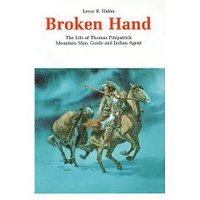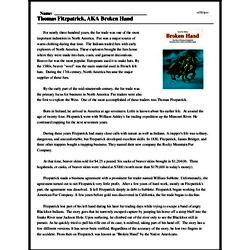Thomas Fitzpatrick, AKA Broken Hand
For nearly three hundred years, the fur trade was one of the most important industries in North America. Fur was a major source of warm clothing during that time. The Indians traded furs with early explorers of North America. These explorers brought the furs home where they were made into hats, coats, and garment decorations. Beaver fur was the most popular. Europeans used it to make hats. By the 1580s, beaver "wool" was the main material used in French felt hats. During the 17th century, North America became the major supplier of these furs.
By the early part of the mid-nineteenth century, the fur trade was the primary focus for business in North America. Fur traders were also the first to explore the West. One of the most accomplished of these traders was Thomas Fitzpatrick.
Born in Ireland, he arrived in America at age seventeen. Little is known about his earlier life. At around the age of twenty-four, Fitzpatrick went with William Ashley's fur trading expedition up the Missouri River. He continued trapping for the next seventeen years.
During these years Fitzpatrick had many close calls with nature as well as Indians. A trapper's life was solitary, dangerous, and uncomfortable, but Fitzpatrick developed excellent skills. In 1830, Fitzpatrick, James Bridger, and three other trappers bought a trapping business. They named their new company the Rocky Mountain Fur Company.
At that time, beaver skins sold for $4.25 a pound. Six sacks of beaver skins brought in $1,204.06. Three hogsheads, or casks, of beaver skins were valued at $7000 (worth more than $179,000 in today's money).




